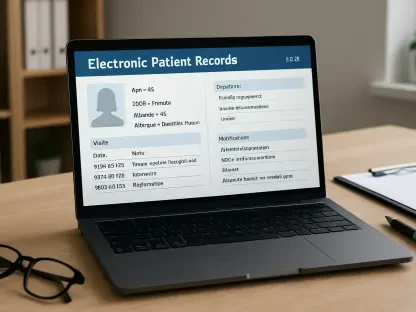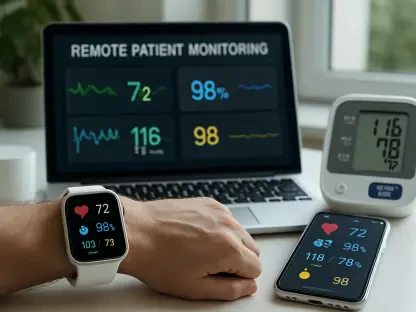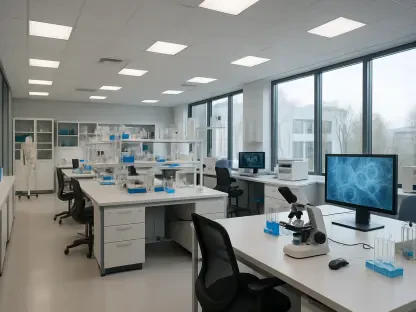Over the past three decades, South Korea has emerged as a pivotal partner in reshaping the healthcare landscape of Laos, a nation long challenged by limited medical infrastructure and access to quality care. This transformative journey, marked by sustained diplomatic ties, has seen remarkable strides in pediatric services, hospital development, disease control, and community health initiatives. Through strategic financial aid, technical expertise, and training programs, South Korea has addressed both immediate healthcare needs and long-term systemic gaps in Laos. A recent media tour organized by the South Korean Embassy, in collaboration with Lao health officials, highlighted the depth of these contributions, showcasing projects that have directly impacted thousands of lives. From modern facilities in urban centers to improved medical access in rural areas, the partnership exemplifies a commitment to sustainable progress, setting a foundation for future advancements in a country where healthcare challenges remain significant.
Building Modern Medical Infrastructure
South Korea’s impact on Laos’s healthcare system is perhaps most visible in the construction of critical medical facilities that have become cornerstones of care. A prime example is the Children’s Hospital in Vientiane, established with a substantial grant from the Korea International Cooperation Agency (KOICA) and operational for over a decade. This 70-bed facility, equipped with an emergency room, intensive care unit, and advanced laboratories, serves thousands of young patients each year. Beyond direct care, it functions as a vital training hub for medical staff, ensuring that local professionals gain the skills needed to maintain high standards. South Korean support also extends to equipment maintenance and ongoing technical guidance, which helps sustain the hospital’s operations over time. This initiative reflects a broader strategy of not just building infrastructure but ensuring its longevity through capacity-building efforts, addressing a core need in a nation where pediatric care was once severely limited.
Another ambitious project underscoring South Korea’s role is the development of the University of Health Sciences (UHS) National University Hospital, supported by a significant concessional loan from Korea. This 400-bed facility, currently under construction, is designed to be more than just a hospital; it includes classrooms to train healthcare professionals who will serve both central and remote provincial areas. The focus on education tackles a persistent shortage of skilled medical personnel in Laos, particularly in underserved regions where access to trained doctors and nurses remains scarce. By integrating treatment and training, this hospital aims to create a ripple effect, enhancing healthcare delivery across the country. The scale of investment and the forward-thinking design of this project highlight how South Korea prioritizes long-term solutions over temporary fixes, laying the groundwork for a more resilient medical workforce in Laos.
Enhancing Diagnostic and Supply Systems
South Korea’s contributions to Laos’s healthcare extend beyond physical infrastructure to include critical improvements in diagnostics and medical supply chains, areas essential for effective care delivery. A notable effort is seen at the National Center for Laboratory and Epidemiology (NCLE), where collaboration with the Korea Disease Control Agency (KDCA) has bolstered the country’s ability to monitor and respond to diseases. This partnership proved indispensable during global health crises like the COVID-19 pandemic, enabling rapid scaling of testing capabilities and maintaining stringent safety standards. Upgraded laboratory equipment and training for local technicians have empowered Laos to better manage outbreaks and routine diagnostics alike. This focus on strengthening disease surveillance systems demonstrates an understanding of the importance of preparedness, particularly in a region vulnerable to infectious diseases due to geographic and economic factors.
Equally impactful is the work at the Medical Product Supply Center (MPSC), where South Korea, through the Korea Foundation for International Healthcare (KOFIH), has revolutionized the management of medical equipment. Since the initiative’s early phases, several provincial hospitals have seen significant upgrades, with a current phase running from this year to 2028 set to expand support to additional rural facilities. Valued at nearly $4 million, this project ensures that even remote areas have access to reliable medical tools, a game-changer for communities often cut off from urban healthcare hubs. By streamlining logistics and providing maintenance training, South Korea has helped reduce equipment downtime, ensuring that healthcare providers can focus on patient care rather than struggling with outdated or broken resources. This systemic approach addresses a fundamental barrier to consistent medical services in Laos, showcasing a commitment to equitable health access.
Fostering Community Health and Resilience
Beyond hospitals and technical systems, South Korea has invested in community-driven health initiatives that engage the public and address grassroots needs in Laos. One striking example is the blood donation drive organized in collaboration with the Lao and Korean Red Cross at the UHS campus. This program promotes voluntary donations through awareness campaigns, modern equipment, and training for local staff, aiming to meet the national blood supply demand. In a country where shortages can jeopardize emergency care, such initiatives are vital for saving lives and building a culture of communal support. The emphasis on public participation reflects an understanding that sustainable healthcare requires active involvement from the population, not just top-down interventions. This effort has helped bridge a critical gap, ensuring that hospitals have the resources needed for surgeries and trauma care.
Another dimension of community-focused support is evident in the broader outreach programs that accompany South Korea’s healthcare projects, often targeting rural populations with limited access to services. These initiatives include mobile medical units and health education campaigns, frequently supported by Korean expertise, to bring basic care and preventive knowledge directly to remote villages. By addressing issues like maternal health, nutrition, and sanitation, such programs empower communities to take charge of their well-being, reducing reliance on distant facilities. The integration of local leaders and volunteers in these efforts ensures cultural relevance and fosters trust, amplifying their impact. This holistic approach, combining immediate aid with education, underscores South Korea’s strategy of creating self-sustaining health improvements, tailored to the unique challenges faced by Laos’s diverse and often isolated populations.
Reflecting on a Legacy of Impact
Looking back, South Korea’s three-decade partnership with Laos in healthcare stands as a testament to the power of targeted, collaborative development. From the establishment of key facilities like the Children’s Hospital to systemic upgrades in diagnostics and supply chains, the efforts have touched countless lives by enhancing access to quality care. Community initiatives, such as blood donation drives, further embedded a sense of shared responsibility for health outcomes. As this collaboration evolved, it consistently adapted to Laos’s pressing needs, whether through infrastructure or training. Moving forward, the focus should remain on expanding rural outreach and integrating advanced technologies to keep pace with emerging health challenges. Strengthening local governance in healthcare management could also ensure that gains made over the years endure. This enduring alliance offers a blueprint for international cooperation, suggesting that future endeavors build on mutual trust and a shared vision for healthier communities.









